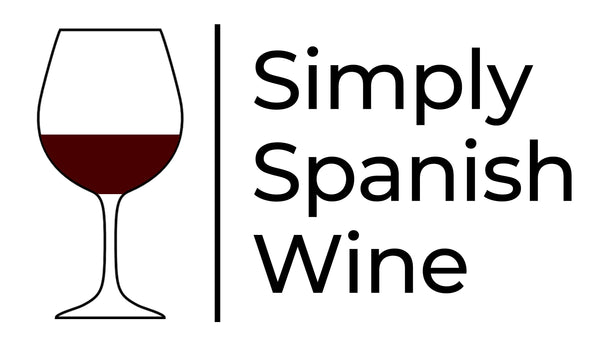It’s probably fair to say that when we say the word 'Rioja', most people think of red wine. That’s not surprising. For a start, its reputation as Spain’s most famous wine-producing region is built on excellent, barrel-aged red wines. And even when they’re not crianzas or reservas (read more about Ageing Wine), red wines will still dominate any Riojan wine list.
But they do make white wines in Rioja. And we ignore them at our peril.
White wine has had something of a roller-coaster ride in Rioja. According to the illustrious Riojan wine expert Tim Atkin, it’s quite possible that in pre-phylloxera days, white wine was produced at least as much as red and potentially even more. But as phylloxera wreaked havoc with wine production in France, demand for wine produced in other countries increased, and Spain answered the call. So it was that Rioja became a major source of wine for French drinkers, who predominantly wanted reds.
So white wine slowly began to lose traction in the region and, despite a bit of a rebound in the 1970s, production dropped to a low of about 2% at the turn of the century.
Fortunately, that decline has stemmed, and white wines now account for 9% of the region’s total production. About two-thirds of the white grapes grown in Rioja are Viura (also known as Macabeo in other parts of Spain) which makes up about 6% of all the vines planted. It’s a productive grape which produces lovely fruit and floral aromas, and it has a good level of acidity which means it can produce good wines for ageing (more on that later).
A great example of what Viura can produce is MacRobert & Canals’ exceptional Laventura Viura. This delicious wine – of which only 4,133 bottles were made in the 2020 vintage – is full of fruit aromas like apple, pear, lime and peach, and has a lovely balanced flavour in the mouth. Owner and head winemaker Bryan McRobert is a firm believer in making wines that express the personality of the grapes and the characteristics of the vineyard where the grapes are grown. And this wine is a perfect example of his craft.
But Viura isn’t the only white grape you’ll find in Rioja. In fact, of the 14 grapes that are sanctioned for use by Rioja’s governing body (Consejo Regulador), nine are white versus just five reds. So there’s a surprising amount of variety in Riojan whites.
Beyond Viura you’ve got local stalwarts like Garnacha Blanca, Tempranillo Blanco and the long-standing Maturana Blanca, which can trace its Riojan heritage back to 1622.
Then you have more intriguing varieties like Malvasía. In Spain, Malvasía is probably more readily associated with the Canary Islands where you’ll find it as Malvasía Volcanica or Malvasía Aromatica. But it also crops up all over Spain in various guises, including Doña Blanca, Malvasía Blanca, Alarije, Blanca Roja, Rojal and Subirat Parent. Here in Rioja, it tends to be known as Malvasía Riojana, and is often used in blends to add body and weight to a wine.
Or how about Turruntés? Not to be confused with Galicia’s Torrontés (although it is sometimes spelt the same on the bottle), this local variety is most closely related to Albillo Real and brings good acidity to wines with plenty of green apple notes and a touch of herbs.
And finally, you have the new kids on the block – Chardonnay, Sauvignon Blanc, and Verdejo. Between them, they only make up 1% of total production, but they are making their presence felt in lighter, fresher, more drinkable whites.
So Rioja offers plenty of variety when it comes to white grapes, and a great example can be found in our own Solarce Blanco. A blend of Chardonnay, Viura and Malvasía, this delicious white from Casa La Rad has an elegant nose with aromas of white flowers and orchard fruit combined with great body and well-balanced acidity. It’s a refreshing, bright wine that, like others with a similar profile, are helping Rioja’s whites to diversify beyond the excellent, fuller-bodied, barrel-aged whites that Rioja also produces.
Ageing is not something perhaps you readily associate with white wine, but here in Rioja it’s a well-established practice. In fact, historically, Rioja’s white wines were famed for their full-bodied-ness and their oaked personalities. Even now, aged white wines from Rioja sit at the pinnacle of the wine world, with Marques de Murietta’s Castillo Ygay Blanco Gran Reserva Especial 1986 being the first Spanish white wine to achieve 100 Parker Points. Now, if you want to experience what a 100-point white reserva tastes like you’ll need to dig deep into your pockets. If you can get your hands on a bottle, it’ll set you back about €1,000. Fortunately for us mere mortals, Bodegas Loli Casado produce an absolutely delicious barrel-aged white - Jaun de Alzate Blanco Reserva 2010 - at the much more affordable price of €16 (check out our offer below).
So there you have it. White wines might not be top of the mind when it comes to thinking about Rioja, but they are well worth exploring. And to help you do that, we’re offering great discounts on our three Riojan whites. Take a look at our offers below and start to discover these hidden gems from Spain’s most famous wine-making region.
Cheers!

